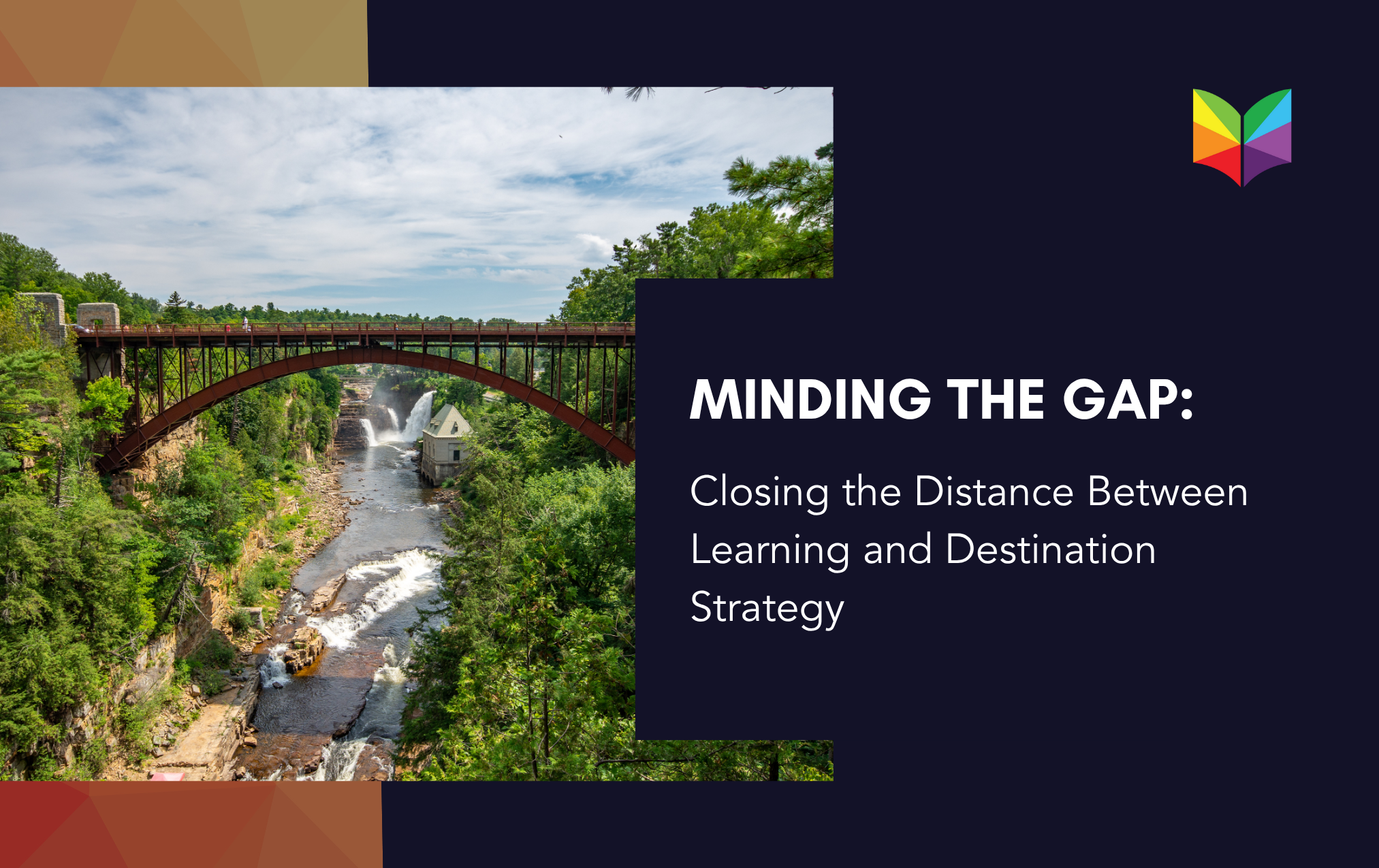
Minding the Gap: Closing the Distance Between Learning and Destination Strategy
Most destination marketing organizations have grand visions. They imagine thriving communities supported by tourism, local pride ignited through storytelling, and visitors who feel so welcomed they’re already planning their next trip back before they’ve even left. But achieving those visions isn’t simply a matter of clever marketing or big data dashboards. It requires something far more human - people who know how to bring those visions to life. That’s where closing the gap between destination strategy and learning becomes critical.
Why the Gap Exists
Destination strategies often live in slide decks, strategic plans, or mission statements shared with boards and stakeholders. But what happens after the boardroom presentation ends? If local hospitality workers, volunteers, frontline staff, or even partners haven’t received the training needed to embody those goals, a disconnect forms.
It's a phenomenon echoed across industries. Research from the Association for Talent Development (ATD) finds that companies aligned on learning and business strategy are 58% more likely to meet their goals and 46% more likely to be market leaders in their segment. Yet, in the tourism sector, where turnover can be high and workforces dispersed, this alignment remains a challenge.
Building a Bridge with Purposeful Learning
At Learn Tourism, the nonprofit academy, we’ve spent years narrowing that gap with one foundational belief: learning should be an extension of your destination strategy, not an afterthought.
When a DMO in the Poconos set out to amplify visitor satisfaction, its tourism training was designed to do more than check a box. The course offered community members insight into the region’s assets, history, and hospitality expectations. It wasn’t just training—it was onboarding local champions. Testimonials reflected this shift, like one participant who shared, “I feel much more confident in my ability to create exciting experiences for visitors to the Poconos.”
Whether the goal is improved accessibility, deeper visitor engagement, or brand cohesion, training modules can be built around measurable outcomes. These include knowledge retention, stakeholder sentiment, guest satisfaction scores, or even digital referrals and reviews.
From Passive Learners to Active Contributors
One hallmark of effective training is participation, not just in the course itself, but in the community afterward. For instance, when participants in Lexington’s Destination LEXpert program learned about self-guided tours, tourism’s economic impact, and visitor resources, many reported feeling more empowered to answer questions, recommend experiences, and become proud representatives of their community.
Tourism leaders like those from Visit Baltimore have seen the impact firsthand. “Online training helps empower frontline professionals so that they can answer difficult questions about the city honestly and showcase the ripple effect tourism has,” he said.
In this context, training becomes transformational. It helps community members not just memorize facts but internalize the destination’s values and act on them.
Aligning Strategy with Outcomes
At Learn Tourism, we encourage destinations to think of their learning tools as their voice. Just like a visitor center brochure or tourism ad, your training program reflects what matters most to your community.
Here’s how to align your learning with your strategy:
-
Start with Goals, Not Content
Don’t build a course just because it’s expected. Build it because you want to increase overnight stays, raise awareness about lesser-known areas, improve DEI practices, or meet other core KPIs. -
Customize the Curriculum
Cookie-cutter content can’t move strategy. Use localized examples, insider stories, and relevant data to make it real. For example, referencing a $1.6 billion impact from local tourism makes training tangible and memorable. -
Embed Accountability
Leverage real-time dashboards and analytics to track engagement and outcomes. Knowing who has completed the training, what modules they reviewed, and what feedback they left is essential for continuous improvement. -
Encourage Application
Include role-playing scenarios, toolkits, or conversation starters that help learners immediately apply what they’ve learned in real-life interactions with visitors. -
Update Regularly
Strategy changes, events shift, and attractions open and close. Your training content should be just as nimble, evolving to reflect your destination's real-time needs.
Making Learning a Strategic Lever
When learning aligns with strategy, it becomes a lever, not a load. As one county DMO rep said, “Without online training, there’s no way we could reach everyone in our community and build the support we need to continue marketing ourselves as a prized destination.”
The power of strategic learning in tourism lies in its ripple effect. It helps locals see themselves as stewards, partners as collaborators, and visitors as honored guests.
To close the gap, we must stop treating learning as an event and start treating it as a strategy. Because the better trained our communities are, the stronger our destinations become.
About Learn Tourism the nonprofit academy...
Learn Tourism is a 501c3 nonprofit organization dedicated to advancing the tourism industry through innovative educational practices and professional development initiatives. Our mission is to harness the power of science, business psychology, and adult education to build sustainable economies and enrich the tourism landscape.
